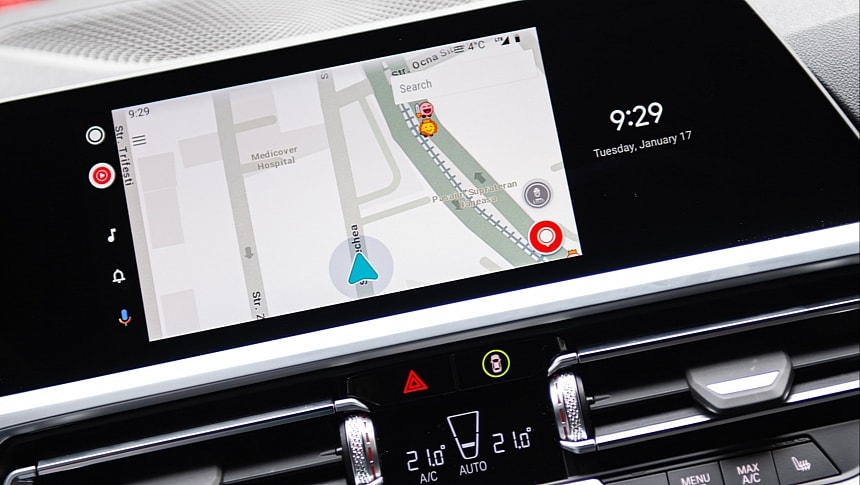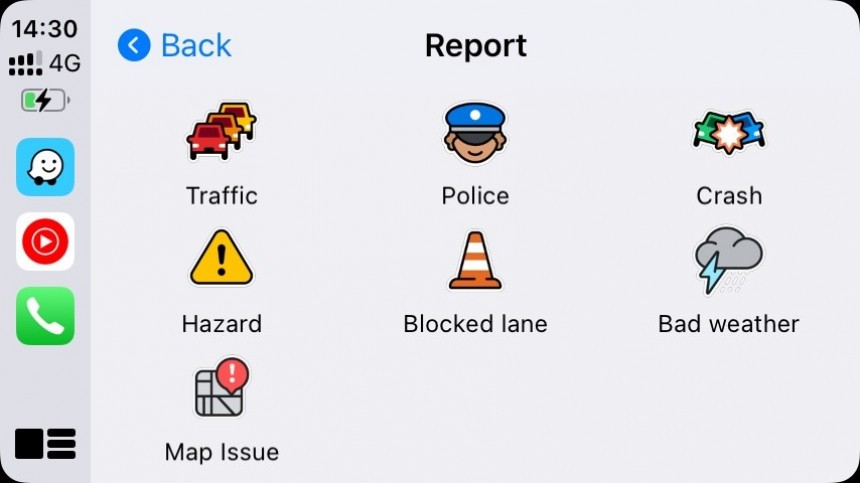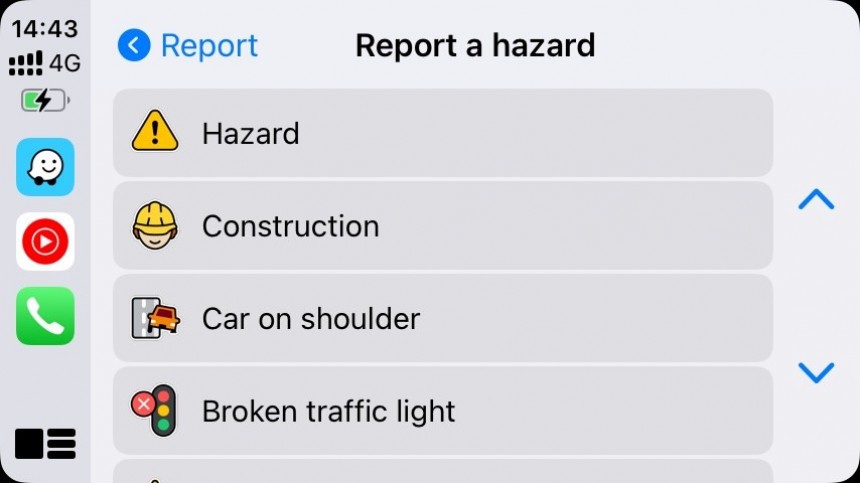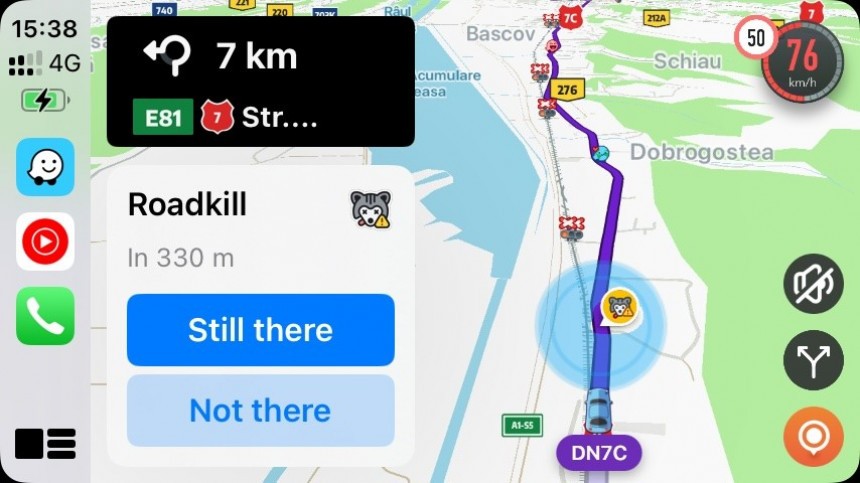Waze and Google Maps belong to Google, and despite seemingly sporting a similar purpose, they are different software built with a distinctive goal in mind.
Google Maps was, is, and will continue to be an all-in-one mapping platform. Its purpose is to provide users with detailed maps, exploration capabilities, street-level imagery, and other features that wouldn't make sense in a navigation app.
Google Maps is focusing more on the monetization part of the business, so store information, reviews, opening hours, and other data that could help the search giant bring home the bacon receive more and more attention.
Google Maps also includes a navigation component, which many users rely on for directions to a destination. Google has also tried to improve the navigation focus, though its priority remains innovative features in other categories.
Meanwhile, Waze has barely improved in the last few years. The only big update is the redesign released a few weeks ago, which simplifies the reporting experience and makes it easier for users to flag the location of certain hazards on the map. Otherwise, Waze didn't receive any big features, sticking with a lineup that works but starts to feel outdated.
With Waze already donating traffic information and other data to Google Maps, I feel it's time to get something in return. And the transition from Google Maps to Waze should start with these features.
I know what you think. Offline maps in Waze wouldn't make much sense, as the application needs an Internet connection to download and upload traffic data.
That's correct, but once an Internet connection is no longer available, Waze shouldn't let users struggle to figure out which way to go. Waze needs offline maps to continue the navigation experience and make it clear to users that they won't get updated traffic information and reports sent by others.
Waze can currently work offline only with a cached route. The application can continue offering turn-by-turn guidance if you configured a route when an Internet connection is still available. When you go offline, Waze follows the same route without downloading new traffic data and looking for alternate routes.
Google Maps works like a traditional sat-nav device when an Internet connection isn't available. It searches for routes, offers turn-by-turn information, and generates alternate routes. It doesn't download traffic information, so you won't know where you will likely encounter heavy traffic.
Launched in 2021 in Google Maps, the eco-friendly routes are a brilliant idea that fits the Waze concept like a glove.
Compared to the fastest routes typically generated by a navigation app, the eco-friendly routes consider more factors, including the road incline and traffic conditions. The purpose is to reduce fuel consumption and emissions while driving to the destination.
Google says the feature already works like magic, as it has significantly reduced emissions since its debut three years ago. Google claims eco-friendly routes cut emissions by the equivalent of taking 500K cars off the road.
Waze looks for the fastest routes by default. It's an approach that perfectly matches the concept powering the app, as remaining up-to-date with real-time traffic helps the app find faster routes to a destination.
However, the eco-friendly routing could push the navigation experience to a new level, especially in crowded regions. Heavy traffic goes hand in hand with huge emissions, so Waze could significantly contribute to reducing the carbon footprint.
The application would be able to look for the busiest intersections, and by helping drivers avoid them, it could help reduce emissions, even if it means adding one or two minutes to the ETA. Like in Google Maps, the eco-friendly routes should be optional, so drivers can still choose how they want to use Waze. If the eco-friendly route doesn't significantly increase the ETA, it should be favored over the fastest route.
I know what you think, but before you rush to the comments section to tell me how wrong I am because the new Google Maps is horrible, hear me out.
Waze sports a cartoonish interface that doesn't make any sense for a modern piece of software, and I'm surprised the parent company hasn't tried to refine it in the last few years. The interface is barely unchanged, and gamification items, such as the moods, only contribute to the cluttered UI without any real benefit to the user.
Despite Google trying to make Google Maps a money-making machine, the application still features a cleaner, more simplified, and modern UI. I don't like the new colors either, but I'm slowly getting used to them, so it's a matter of time until everybody does the same.
The Waze UI is horrible, and many readers told me the interface is why they don't use the app. I can't blame them. Waze deserves a better UI that doesn't look like it's designed by a kid, and looking at Google Maps could be a good way to start improving the application in this essential direction.
Google Maps is focusing more on the monetization part of the business, so store information, reviews, opening hours, and other data that could help the search giant bring home the bacon receive more and more attention.
Google Maps also includes a navigation component, which many users rely on for directions to a destination. Google has also tried to improve the navigation focus, though its priority remains innovative features in other categories.
Meanwhile, Waze has barely improved in the last few years. The only big update is the redesign released a few weeks ago, which simplifies the reporting experience and makes it easier for users to flag the location of certain hazards on the map. Otherwise, Waze didn't receive any big features, sticking with a lineup that works but starts to feel outdated.
With Waze already donating traffic information and other data to Google Maps, I feel it's time to get something in return. And the transition from Google Maps to Waze should start with these features.
The offline maps
That's correct, but once an Internet connection is no longer available, Waze shouldn't let users struggle to figure out which way to go. Waze needs offline maps to continue the navigation experience and make it clear to users that they won't get updated traffic information and reports sent by others.
Waze can currently work offline only with a cached route. The application can continue offering turn-by-turn guidance if you configured a route when an Internet connection is still available. When you go offline, Waze follows the same route without downloading new traffic data and looking for alternate routes.
Google Maps works like a traditional sat-nav device when an Internet connection isn't available. It searches for routes, offers turn-by-turn information, and generates alternate routes. It doesn't download traffic information, so you won't know where you will likely encounter heavy traffic.
Eco-friendly routes
Compared to the fastest routes typically generated by a navigation app, the eco-friendly routes consider more factors, including the road incline and traffic conditions. The purpose is to reduce fuel consumption and emissions while driving to the destination.
Google says the feature already works like magic, as it has significantly reduced emissions since its debut three years ago. Google claims eco-friendly routes cut emissions by the equivalent of taking 500K cars off the road.
Waze looks for the fastest routes by default. It's an approach that perfectly matches the concept powering the app, as remaining up-to-date with real-time traffic helps the app find faster routes to a destination.
However, the eco-friendly routing could push the navigation experience to a new level, especially in crowded regions. Heavy traffic goes hand in hand with huge emissions, so Waze could significantly contribute to reducing the carbon footprint.
The application would be able to look for the busiest intersections, and by helping drivers avoid them, it could help reduce emissions, even if it means adding one or two minutes to the ETA. Like in Google Maps, the eco-friendly routes should be optional, so drivers can still choose how they want to use Waze. If the eco-friendly route doesn't significantly increase the ETA, it should be favored over the fastest route.
The interface
Waze sports a cartoonish interface that doesn't make any sense for a modern piece of software, and I'm surprised the parent company hasn't tried to refine it in the last few years. The interface is barely unchanged, and gamification items, such as the moods, only contribute to the cluttered UI without any real benefit to the user.
Despite Google trying to make Google Maps a money-making machine, the application still features a cleaner, more simplified, and modern UI. I don't like the new colors either, but I'm slowly getting used to them, so it's a matter of time until everybody does the same.
The Waze UI is horrible, and many readers told me the interface is why they don't use the app. I can't blame them. Waze deserves a better UI that doesn't look like it's designed by a kid, and looking at Google Maps could be a good way to start improving the application in this essential direction.









